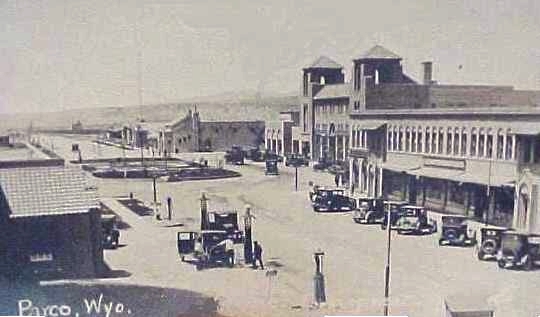
Parco, 1920's
Seven miles further to the west of Fort Steele is the planned community of Sinclair, formerly known as
Parco. Parco was constructed between 1923 and 1926 by Denver based Producers and Refiners Corporation, an
independent oil company. Past the park in the middle of the street is the Riviera
Theatre.
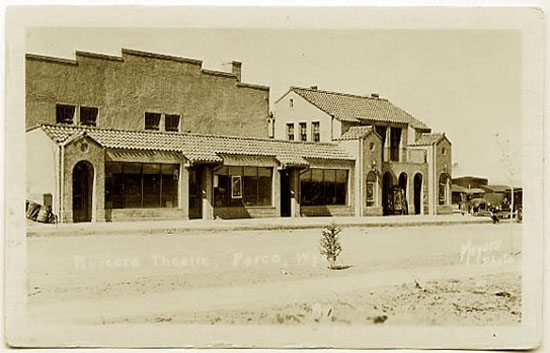
Riviera Theatre, Parco.
The town provided housing for employees of the company's 9,000 barrels a
day oil refinery. The refinery was served by a pipeline constructed
from the Salt Creek and Lost Soldier Oil Fields. [Writer's note, a barrel is
42 gallons, deriving its size from that decreed by a statute passed during the
reign of Edward IV as the standard for a barrel of pickled herrings.]
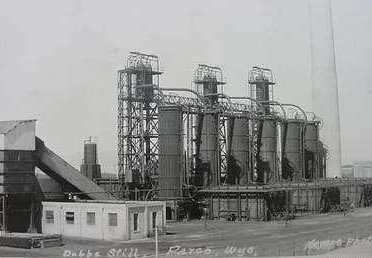
Dubbs Still, Parco, 1920's
A "Dubbs Still" was named after its inventor Jesse Dubbs, who, in the early 1920's invented a new method of
"cracking" petrolem which was much more efficient than an older method used by
Standard known as the W. M. Burton method. Thus, the Dubbs Still used by Producers and
Refiners constituted the very latest and most modern technology available. Dubbs was so into
petroleum refining that he named his son C. P. Dubbs. The "C. P." stood for Carbon Petroleum. Carbon P.
Dubbs (1881-1962), in turn named his son Carbon Petrolem Dubbs, Jr.
Producers and Refiners had interests in oil and gas leases in Wyoming, Utah, Oklahoma, and New Mexico. In 1922, the
Company started drilling near Farmington. In 1923, it brought it a gas well only 2,385 feet deep, but whose gas
production was estimated at 70,000,000 cubic feet. When the well came in it blew
equipment 125 feet into the air and the roar could be heard ten miles away.
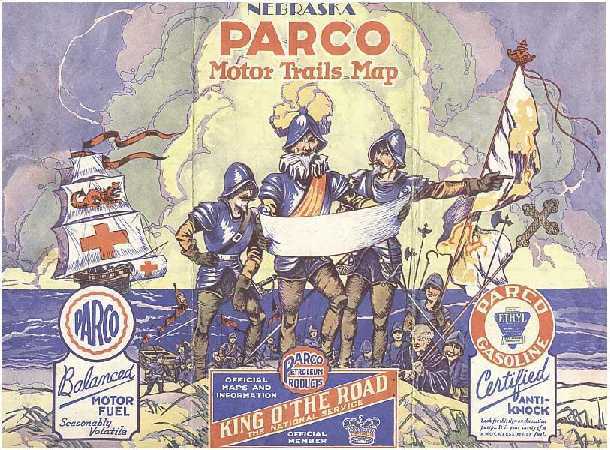
Cover PARCO roadmap, circa 1930
Thus, there arose in what had been a few years before a sheep ranch belonging to
the Cosgriff Sheep Company, a town billed as the "Wonder Town of Wyoming." The town was designed by Denver
architects William E. Fisher and Arthur A. Fisher. The Fishers in addition to designing a number of
notable residences in the Denver area, were responsible for the Denver City Tramway Building at 1100
14th Street, Denver; the Isaac Solomon Synagogue at 6401 W. Colfax; the Neusteter Department Store, 720-726 16th Street; and the
Tower of Memories in the Crown Hill Cemetery, Lakewood.
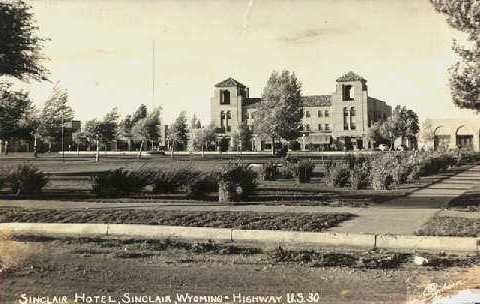
Sinclair Hotel, 1930's
The centerpiece of Parco was the Parco Hotel and the centerpiece of the Hotel was the Fountain Room in
which guests could dine to the gurgling of water coming from the mouths of statutes of
wild cats and into the fountain in which swam gold fish. The hotel and surrounding town is now on the
National Register. Thus, in the middle of a somewhat barren
area of Wyoming there came to be the somewhat improbable scene of a grand hotel looking much like something
that might have been designed for railroad and hotel magnate Henry Flagler by famed New York architects Hastings and
Carrera. Compare with Hotel Alcazar, St. Augustine, FL, below.
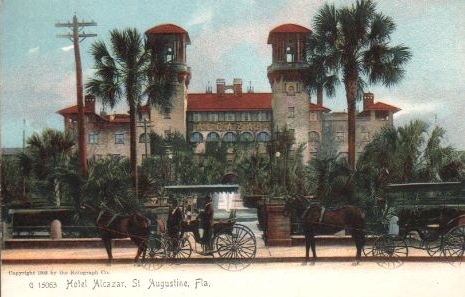
Hotel Alcazar, St. Augustine, Florida, 1905
Notwithstanding Producers and Refiners success in the 1920's, by the
early 1930's the Company was in financial trouble. Most of its debts were
guaranteed by the Sinclair Oil Company. When the Company went into receivership,
Sinclair was able to bid in its assets for the debt which Sinclair had to make good and, thus,
the name of both the town and the hotel were changed to Sinclair.
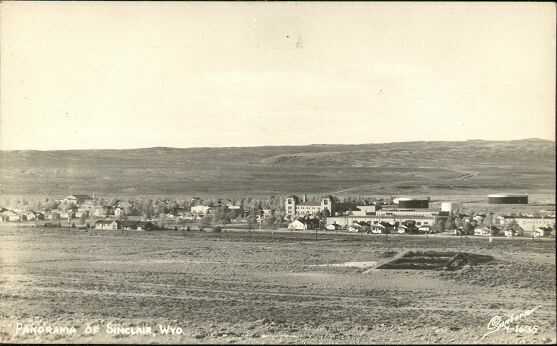
Sinclair, 1930's
Lincoln Highway continued on next page.
|